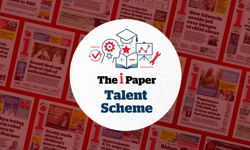These sub A4-sized, back-lit, multi-touch devices provide a canvas for visual impact and interaction which take content consumption to a new level. In the case of the iPad, Apple’s beautiful industrial design is integrated into the iTunes machine – a massive shop window coupled with a seamless purchase experience. If I pick up my iPad from my coffee table, it’s instantly on, instantly connected, and I’m instantly able to choose which brands I want to lean back and enjoy.
The challenge for publishers is how best to harness the massive opportunity that the iPad represents in competition with 40,000 other apps. The stakes are high. Disappoint users and you’re left with an often expensive, poorly-rated failure. Do it right and attract a new audience and possibly unlock a new revenue source.
In this article, we focus on tips for creating a successful iPad app but the rules outlined here can equally apply to any tablet or smartphone app.
1. Define
Success and the App Definition Statement
There is often a driving force from senior management to produce a ‘trophy’ iPad app for a brand. This is a tough place to start from, as an app’s success will never be measured by just ‘being on the iPad’.
It’s important from the start to set Key Performance Indicators (KPIs) against which success is measured in 3, 6, 9 months and beyond.
* “Achieve Xk unique users” - it’s about reach
* “Deliver £Xk sales” - it’s about generating direct revenue
* “Attain chart position X, Y star rating and Z awards”, - it’s about brand placement and industry recognition
Distil down the high level objectives into a one or two sentence elevator pitch that encompasses the app’s mission – the Application Definition Statement (ADS). An ADS is composed of three distinct parts: differentiator, solution, audience. So, a possible ADS for the Weather app of the iPhone could be: Easy to use weather forecaster for casual users.
The ADS gives you focus and can be used to qualify every feature suggestion made by the army of people who will want to be involved with your app.
Understand your market and user expectations
The iPad is still very much a premium device, which is reflected in the typically affluent user demographic - skewed in favour of men (circa 60%) - and the US is by the far the largest market. The relative success of tech and financial titles such as Wired, Focus, FT and Economist reflect these demographics. Of note is that, unlike the iPhone, the iPad is currently much more of an ‘at home’ device shared by all the family. How will you shape your content into an app for that audience?
Prudent selection of content and features
Carefully consider the content and features your audience would expect from the app. Validate your thinking using polls or questionnaires via existing channels – it costs little and can save you time and money. We find it useful to introduce ‘personas’ and ‘use cases’ to discuss how real people might interact with the app. For a typical news app, this might be the “browse headline quickly guy” or the “end to end article woman”. By prioritising the most important use cases for the app, that comply with the ADS, the end product becomes a sharper proposition that is more likely to succeed.
The temptation is to try to include everything in version one. This often results in a slower time to market, more cost, and too little focus on the elements which will make the app compelling. Arguably the Daily iPad app, launched in January, has many nice features but any news app must start quickly to avoid frustrating users - a common complaint of this app. Another challenge for publishers has been the huge file size of iPad magazines that result in frustration for users due to slow, unreliable downloads and bloated iPad backups. It has to work.
Testing in a wider user group helps to pick up these issues as discussed later. Remember, you have ample opportunity to roll out new features in version two and beyond - and users will expect you to!
Content is still king. Think beyond existing assets for what could be included in the app to enhance the experience of users – for example, social media feeds or newly commissioned media. To supplement existing print assets and make the experience more immersive, we often create widgets such as custom interactive info-graphics, 360 images, and online feed streams.
Use competing apps to qualify your feature and content set. What will be your unique selling points when users are presented with a choice of apps? Install and review your competition and build a matrix of features. Read app reviews to highlight which features, present or absent, generated positive or negative feedback. A very relevant example for digital magazines is support for both portrait and landscape – in our experience, users demand both and the additional cost of supporting both pays dividends. Aggressively limit the things the app will do and make sure you do them well.
2. Design
Intuitive & simple navigation
App design is everything. There are few established iPad best practices, other than the recommendations Apple provide in their Human Interface Guidelines (HIG). While you may have digital design resource within your organisation, this is a new medium and it can be worth getting advice from a specialist to ensure a slick end result. The way in which you bring together the content and features into a cohesive, intuitive user experience is fundamental to the app’s success. Small navigation features can make the app infinitely more usable, differentiate it and provide a ‘wow’ factor. The challenge when introducing new navigation concepts is that you must educate users, as we found on projects like BBC News and GoodFood. Tom Britton (thetrainline.com) sums this up perfectly:
“Good design is telling the user what to do but making them think they figured it out for themselves.”
Users have been critical of iPad apps which attempt to replicate too much of the print interaction on the iPad. In our experience, conventional is not the same as intuitive - the iPad is intended for much more than page turning.
At the other end of the scale, be wary of trying to do too much with the navigation. Expecting users to shake their iPad (using accelerometer functionality) to store a bookmark doesn’t ooze class or confidence.
Delight from the start
The Download-Try-Rate-Delete culture of apps means that first impressions are critical. Users expect immediate reward for downloading an app. Optimise the initial experience to fulfil that expectation.
Validate on the device ASAP
Changing designs once they’ve been developed is significantly more expensive than adjusting them at the design stage. It is better to get the design right before a single line of code is written. We frequently take design concepts straight from Photoshop and put them onto the iPad as flat actual size images.
3. Develop
Find the right developer
Development resource for iOS applications is now more readily available but still comes at a premium. Ensure all “Define & Design” groundwork is laid out before development starts. An internal tech team may be eager to take on the challenge but remember that developing for the iPad is not just about competency in Objective C. There are a number of skills and best practices that are required in order to achieve a polished application that meets your objectives and is compelling to use.
If you outsource development, ensure you find a developer with a good track record. While working remotely with a developer can work, we’ve found best results come from close collaboration with clients including regular workshops and regular prototype reviews.
In particular for publishers, there may be publishing platforms available to help you deploy an application quickly by branding an existing white-labelled app, while publishing content using desktop tools you already use. This can be a cost-effective and rapid route to market.
Test, test, test
Users are pretty vocal and intolerant of apps that unexpectedly crash. Don’t underestimate the testing effort required to bring an app up to production quality. Unlike traditional software, app testing needs to consider various combinations of operating system, connection method, device data (low on memory), locale etc. The test user set can be expanded depending on the budget and profile of the app, ultimately including “crowd sourcing” with testers paid per bug – a great way to harden the app.
4. Deploy
Apple approval and beyond
Once the app is production ready, it’s ready to submit to Apple. This can take a few weeks depending on their queue length, so it’s best not to set any hard deadlines in terms of marketing until you have an approved version.
Marketing the app
There may be significant pressure to ensure your app achieves a position in iTunes’ charts. By having a compelling app that is appropriately priced, this is within your control to some degree, but external factors also play a part.
Give Apple visibility of your app pre-launch with the hope they will include it in their “New & Noteworthy” section, for your relevant geography and category.
Create a supporting web page that gives users a clear indication of what the app does (and how to get it). We’ve found producing animated videos supplemented with celebrity intros or voiceovers helps.
Submit the app to review sites but note that the most popular sites now tend to charge for this, so account for this in your marketing budget.
The app rating plays a significant part in users’ willingness to install it, especially if it’s premium. Inevitably, beyond the initial period of rating, the trend is that the most vocal users are those that are disappointed. This can be balanced by simple things like frequent in-app prompts to rate the app, which has been instrumental in the success of apps like Angry Birds.
What happens next?
Once version one of your application has launched, catch your breath. It doesn’t end here. In the rush to do something on the iPad, many people are so focused on initial launch, they forget that the application needs to be updated and improved to continue to perform.
Plan a roadmap of features you simply couldn’t deliver in version one, and those that your vocal user base will request. Open a dialogue with your user base via forums and the App Store. From a content production point of view, ensure you have considered the effort required to sustain the app longer, month by month. If you are publishing in tandem with a print publication, there’ll be a separate set of work to do to get the tablet version launched and up-to-date too. Don’t overlook the costs of maintaining an app in a world where Apple regularly rolls out new iOS versions and hardware.
And finally…
The realities of delivering an app are harsh and there is no guarantee that a big brand name will guarantee success.
While we’ve talked specifically about the Apple eco-system, the same goes for any platform: delivering an app is like delivering any product to market. You have to think about your customer, set goals and targets, prioritise and deliver key features first, and get skilled assistance where you need it.
Good luck!










